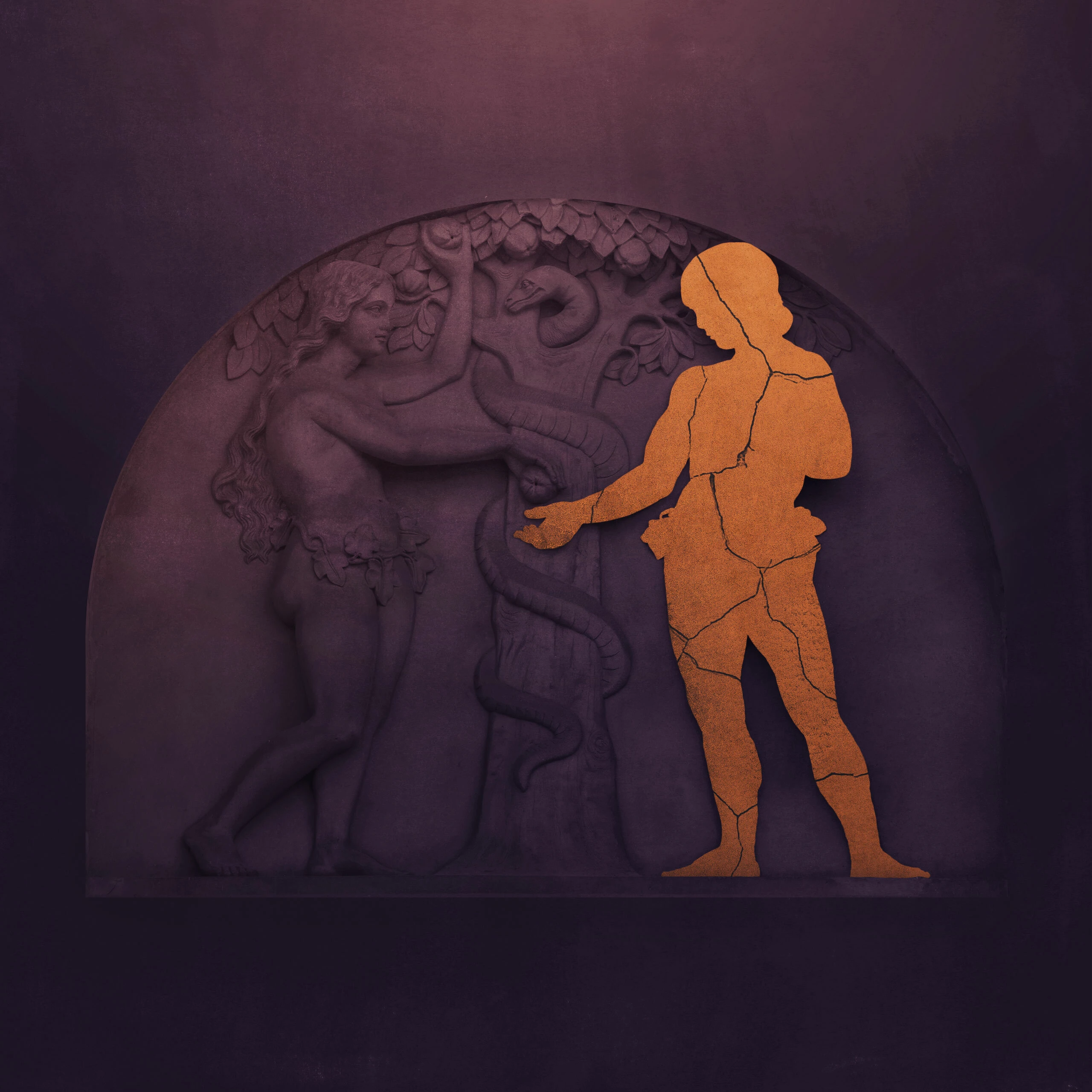What Do Mormons Believe About Adam?

While the most familiar challenge to the biblical doctrine of man comes from Darwinian evolutionary theory, a less-known challenge developed in the same century. Joseph Smith (1805–44) began his claims of visions and meeting an angel named Moroni in upstate New York in the 1820s. Raised on the fringe of Methodism and engaging in “folk magic,” Smith started to teach—like Muhammad centuries earlier—that the Bible was corrupted through “mistranslation” and that he had received new, canonical revelations. Parts of these would be published as The Book of Mormon, The Doctrine and Covenants, and The Pearl of Great Price. While using terms common to Christian theology and citing biblical texts, Smith and his associates’ teaching was anything but Christian. In the midst of the multiplying sects of the early 1800s, they taught destructive heresies (see 2 Peter 2:1–3).
Understanding the Latter-day Saint, or Mormon, doctrine of Adam rests on understanding its teaching on divine beings, creation, and the fall—all vastly different from what Scripture teaches. Mormonism denies the biblical doctrine of the Trinity, speaking instead of three gods: God the first (“Heavenly Father”), God the second (“Jesus”), and God the third (“Holy Ghost”). According to Mormonism, “Heavenly Father,” upon whom Mormon worship and prayer is focused, is an exalted god-man with a body. According to their accounts, he was once a man who lived on another planet but achieved “celestial exaltation,” though he is also spoken of as having co-existed with matter without beginning. The gods do not stop there in Mormon records: Joseph Smith spoke of a council of gods and Brigham Young spoke of other gods and other worlds, stating that he did not know their number. According to Mormon teaching—similar to ancient Greco-Roman polytheism—figures such as Jesus, Lucifer, and Adam were the “spirit-being” offspring of “heavenly parents” with potential to progress to divinity by achieving “celestial exaltation.” There was a time when they were not: the “Heavenly Father” procreated them with his wife, “Heavenly Mother” (whom Mormons rarely mention). Mormons believe that every person on earth had pre-existence as divine offspring “spirit-beings.”
With its succession of “prophets,” Mormon teaching often lacks clarity or is simply contradictory. It describes Adam’s origin sometimes as simply a spirit offspring of the “heavenly parents.” Adam is also described as a spirit-being who was the archangel Michael prior to his earthly existence and again after his death. Smith’s successor, Brigham Young (1801–77), taught an Adam-god doctrine, arguing that Adam created the earth, then “de-celestialized himself,” came to the earth with one of his wives, and fathered Jesus. This teaching, though, fell out of favor with later Mormon leaders, despite Young’s “prophet” status. Smith, Young, and later Mormons taught that, like other “spirit-beings,” Adam’s progress toward divinity required a physical body and experiencing mortality. The first stage of this progress occurred when “Heavenly Father” and Jesus gave Adam and Eve bodies and placed them in the garden of Eden—in Jefferson County, Missouri. According to Smith and his successors, the subsequent eating of forbidden fruit was a “transgression” for good: a noble, free choice. It was positive, as it put Adam and Eve further along the path to becoming gods by gaining a knowledge of good and evil, the ability to do good or sin, and mortality, which are all prerequisites for progress to godhood. According to Mormonism, Eve’s ability to bear children was also a positive consequence of the fall, enabling other pre-existent spirit-beings to receive bodies, mortality, and the same path to divinity.
Smith taught that after the fall, with the earth now populated with mortal free agents who were able to sin and did sin, “Heavenly Father” eventually procreated the spirit-being Jesus with Mary to provide Him a body so that He could teach earth’s population and make atonement by His sweat in the garden of Gethsemane. The latter, Smith taught, made up the difference between the faith and obedience of the faithful: works plus grace enables progress to godhood. Smith also taught that this opened the way to immortality, which came after death. However, the only hope of the worst sinners was that their blood would be shed to atone for their sin. Young took this a step further, encouraging Mormons to put grievous sinners to death by bloodshed. Faith, good choices, teaching, the pursuit of Mormon lifestyle, and engagement in Mormon ritual would enable the “faithful” to become gods.
The gospel of our Lord Jesus Christ is far better than the works plus “grace” teaching.
In 1844, just prior to his assassination while running for the office of U.S. President, Smith gave his last speech, the “King Follet discourse.” In it, he echoed Satan’s lie to the true Adam and Eve (Gen. 3:5), with language that makes Christians shudder:
You have got to learn how to be gods yourselves . . . the same as all gods have done before you . . . until you are able to dwell in everlasting burnings . . . The mind which man possesses is co-equal with God himself.
Mormonism’s Adam is radically different from the true Adam, just as Mormonism’s gods—including the Mormon “Jesus”—radically differ from the one true and living triune God.
Rather than the “spirit-being” man-gods of Mormonism, with their echo of Satan’s lie—“You will be like God” (Gen. 3:5)—Scripture makes plain to us that there is one true and living God, who is “a Spirit, infinite, eternal, and unchangeable, in his being, wisdom, power, holiness, justice, goodness and truth” (Westminster Shorter Catechism 4). God exists in three persons, “the Father, the Son and the Holy Spirit . . . the same in substance, equal in power and glory” (WSC 5). He is Creator of all, and all creation is in every way dependent upon Him. God is infinitely greater in His being and perfection than the false gods of Mormonism (Rom. 1:22–25).
Unlike the Adam of Mormonism, the Adam (and Eve) of Genesis were created by God, body and soul, on the sixth day of creation (Gen. 1:26–27; 2:7, 21–22). They had no pre-existence. The fall into sin, rather than bringing progress, brought humanity into a state of sin and misery—spiritually dead, under the wrath and curse of God, facing physical death and the judgment to come, and, apart from salvation, eternal judgment in hell. Man’s fallen condition is far worse than Mormons believe.
The gospel of our Lord Jesus Christ is far better than the works plus “grace” teaching that Mormons believe. God the Son has taken our nature to Himself in the incarnation so that He who was and is always truly God, is now truly God and truly man in His one person (John 1:1–14; Phil. 2:5–11). He fulfilled the law in perfect righteousness and obedience, as well as the penalty for His people’s sin by His atonement on the cross. Christ’s obedience, suffering, death, and resurrection are for our complete salvation (Rom. 3:9–26; Heb. 2:14–18, 10:11–14).
We are reconciled to God solely through our Lord Jesus Christ. In Him we are forgiven, adopted, sanctified, preserved, and, in time, glorified. He brings us into the “freedom of the glory of the children of God” (Rom. 8:21). We love and serve Him, continuing to grow in the beauty of repentance, faith, and new obedience, simply out of gratitude and joy in Him. This gospel, from Adam to Christ, is what our Mormon neighbors desperately need.

